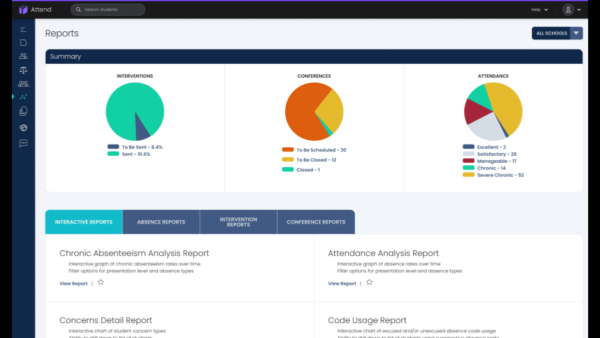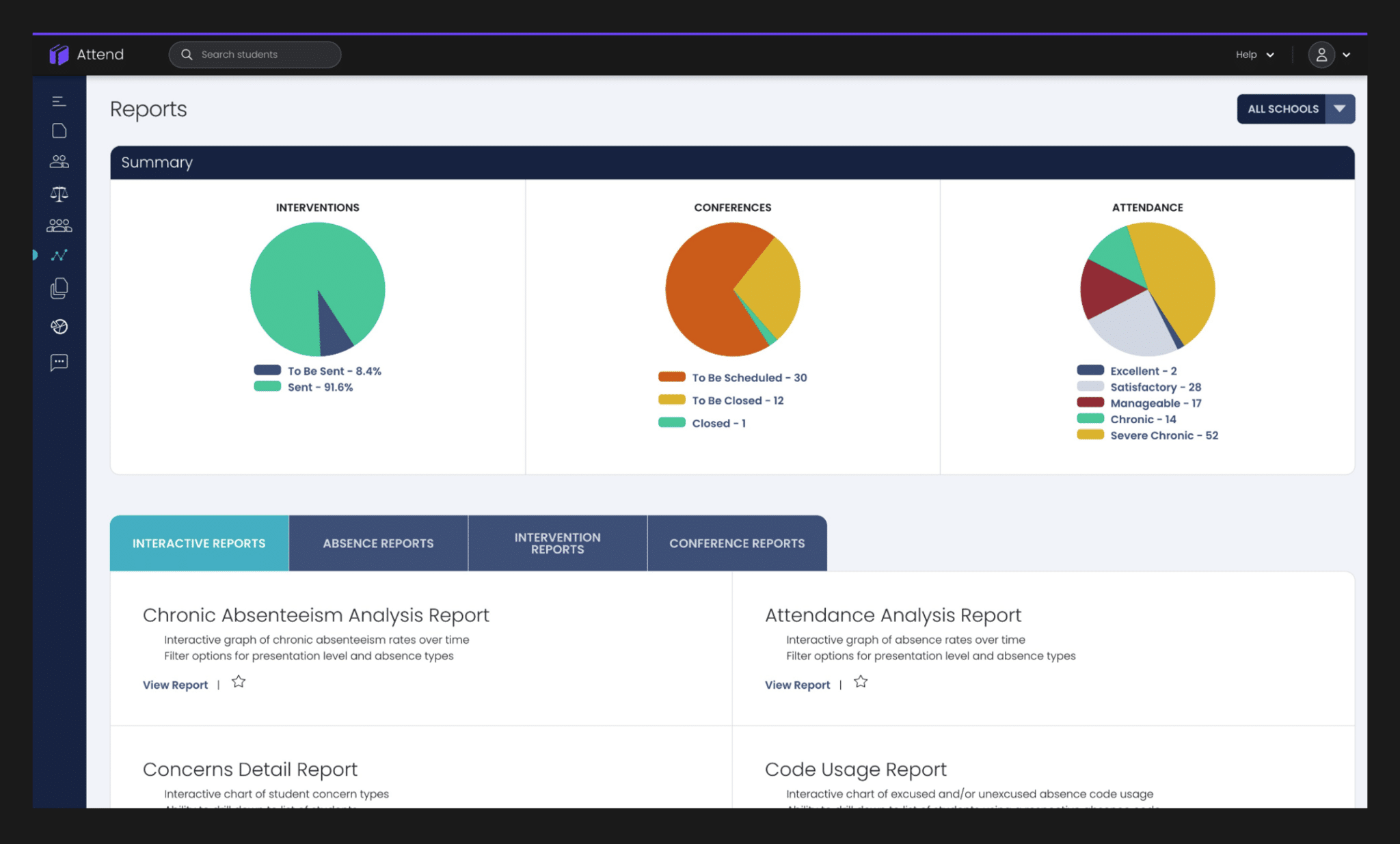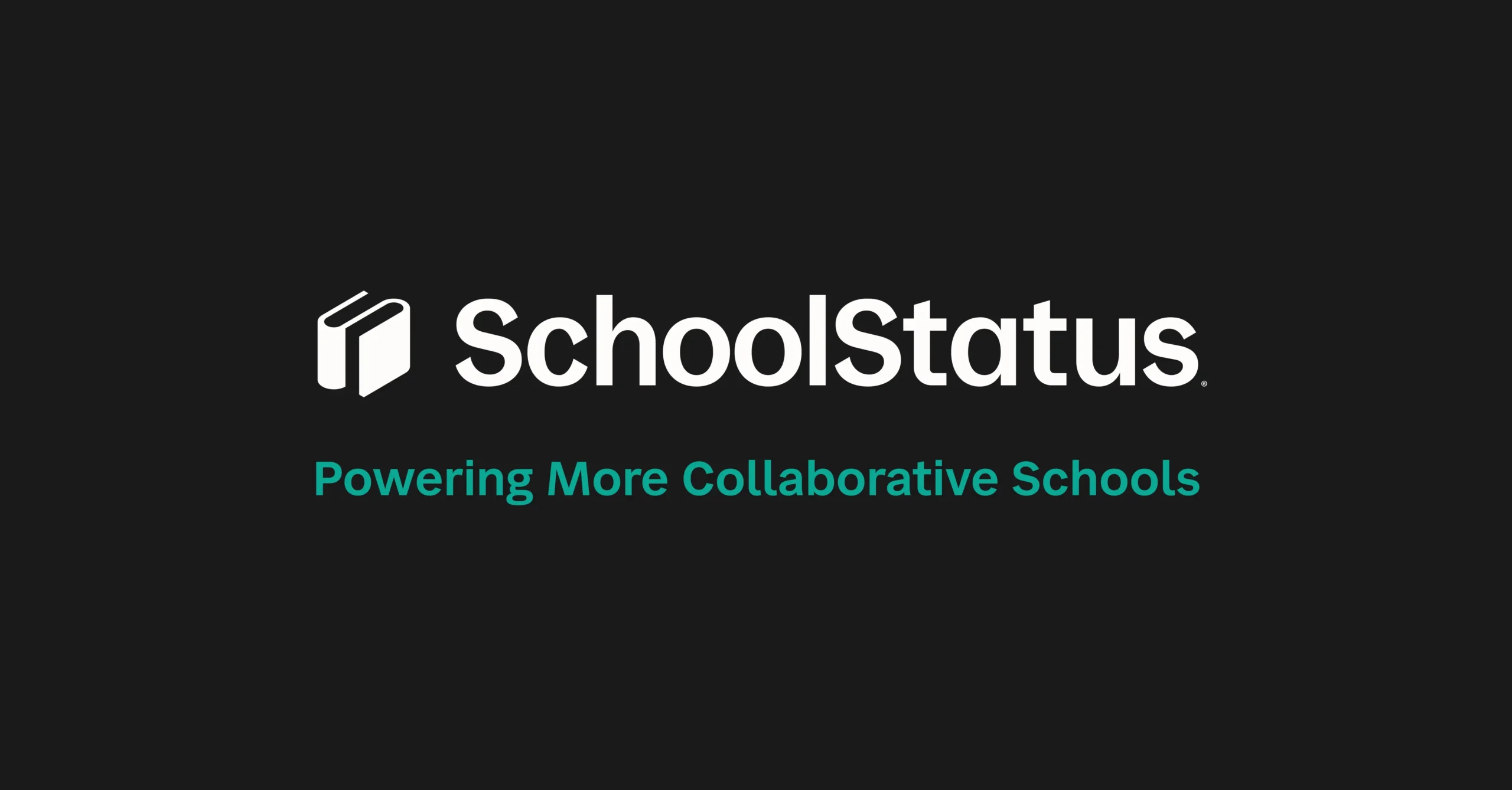

One of the most pressing issues facing educators today is the continued trend of low student attendance in schools. We know that the most effective way to reverse these trends is early intervention and partnering with families. In our last blog in this series, we discussed how SchoolStatus enables school leaders and school professionals to quickly reach out to families when their student is absent using automated messaging and conference scheduling.
But attendance can’t be monitored and acted on just a one-to-one basis. School leaders need the big picture—ways to see broad data trends among schools, classes, grade levels, and more. Identifying data trends at a granular level, across the entire district, helps to put attendance intervention strategies into place that correspond to real students and the facts on the ground. And when it comes time to report on attendance and the success of intervention methods, a clear view of data and easy access to reliable reporting make all the difference.
In this blog post, see how administrators and school professionals can use SchoolStatus Attend to get an honest accounting of attendance data, and easily find the data and insights that matter most.
Filtering Views for Individual Student Data

SchoolStatus Attend uses data from your Student Information System (SIS) to find attendance information and send intervention and conference letters. This helps to accelerate analysis and save valuable time on processing student data.
SchoolStatus Attend compiles and validates this data to normalize it across schools. Then our platform creates clear reports that give your staff a complete view of attendance.
Most Used Attendance Reporting at a Glance

There are several reporting options that allow you to easily view and understand attendance trends.
Attendance Events. With this view, you can see attendance events, like absences, partial absences, and tardies, for a particular student, sorted by day and period. This is extremely useful when identifying and understanding what may be causing recurring absences.
Attendance Summary. View a summary of attendance rates for a specific audience, such as a school or class. This report shows a summary of all intervention, attendance information, and chronic information for every single student in the selected school or district. With this view, you can see the student population separated by attendance trends, and identify groups such as Chronically Absent students
Conference Details. This report is used to identify which students have not been conferenced, which conferences haven’t been closed, and which conferences have been addressed. This is very helpful for managing multiple cases in a short time frame, and simplifies reporting into a single place.
Data Can Help Make a Difference
Once you understand student behaviors and trends with reliable, easy-to-read data, it becomes much easier to cut through busy work and spend time where it’s most needed. SchoolStatus Attend helps you easily view and report on attendance trends, helping you get the big picture on student attendance.
If you’re interested in seeing what SchoolStatus Attend can do for your district, get in touch with our team for a free demo.
Stay Connected
News, articles, and tips for meeting your district’s goals—delivered to your inbox.




